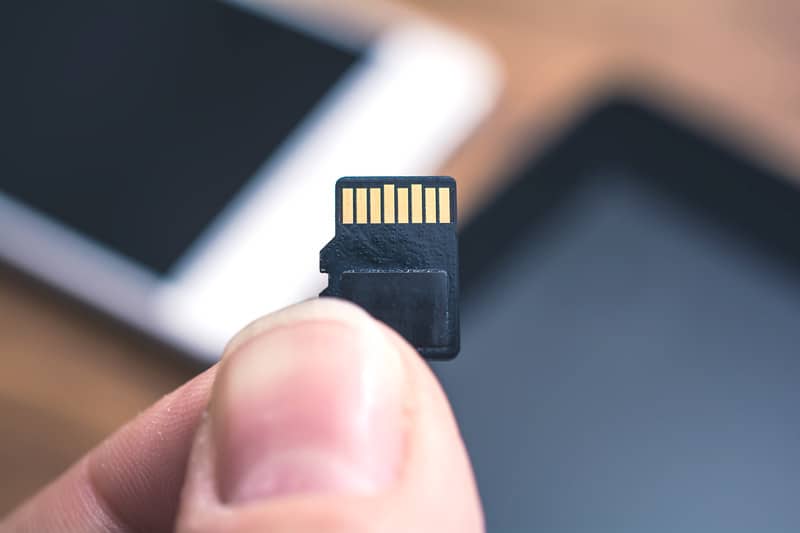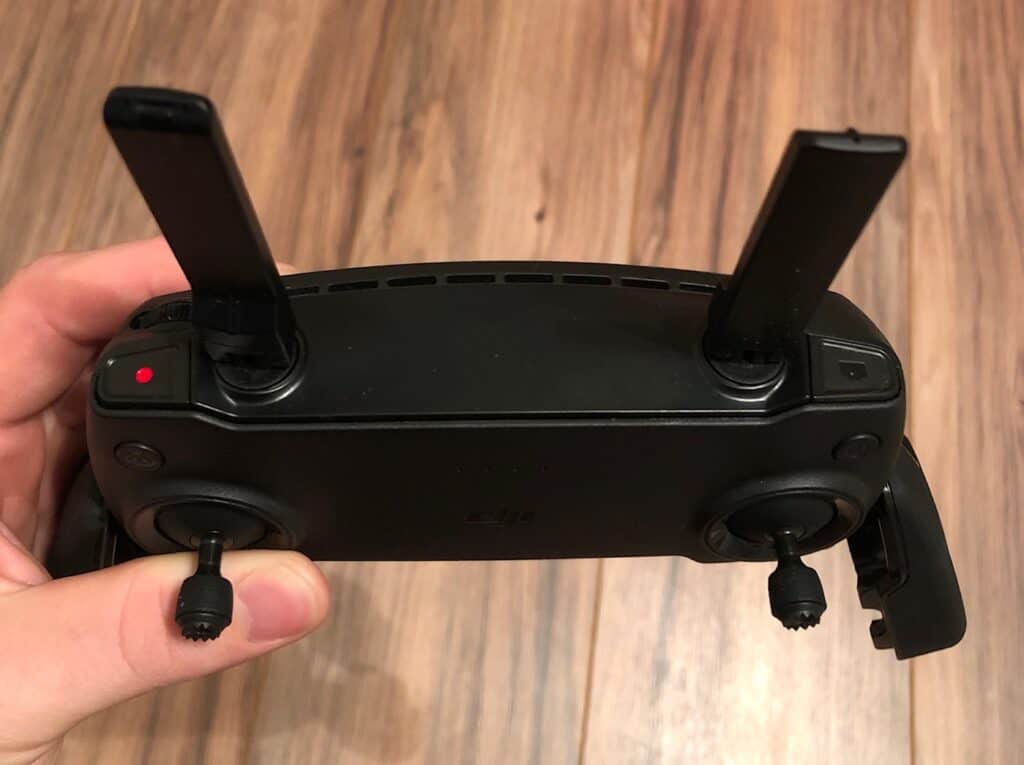One problem has been cropping up on drone forums more than ever lately: Why does my Mavic Mini stop recording? Even more annoying is the fact that DJI support seems to have nothing useful to offer except suggesting the drone be returned for repair.
If you’ve charged your drone’s battery and ensured it has enough space to record, you should get that recording. We looked into the top culprits and rounded up a few solutions. The main reason the Mavic Mini Stops recording is due to a bad or slow SD Card.
Your Card May Be Too Slow
Many problems with cameras, in general, happen because of the wrong type of card. Not all cards were created equal when it comes to writing speed. High-bitrate videos taken by 4k action cameras need fast microSD cards that can keep up.

For the Mavic Mini, DJI requires UHS-I Speed Class 3 microSD cards or above. Your best bet is to stick to one of the DJI-recommended microSD cards below.
| 16 GB | SanDisk ExtremeLexar 633x |
| 32 GB | Samsung Pro Endurance, Samsung Evo Plus, SanDisk Industrial, Sandisk Extreme V30 A1, SanDisk Extreme Pro V30 A1, Lexar 633x, Lexar 667x |
| 64 GB | Samsung Pro Endurance, Samsung Evo Plus, SanDisk Extreme V30 A1, Lexar 633x, Lexar 667x, Lexar 1000x, Toshiba Exceria M303 V30 A1, Netac Pro V30 A1 |
| 128 GB | Samsung Pro Plus, Samsung Evo Plus, SanDisk Extreme V30 A1, SanDisk Extreme Plus V30 A1, Lexar 633x, Lexar 667x, Lexar 1000x, Toshiba Exceria M303 V30 A1, Netac Pro V30 A1 |
| 256 GB | SanDisk Extreme V30 A1 |
Ditch the SanDisk Ultra
Most of the complaints we found online came from people using the SanDisk Ultra 32 GB. It seems to be among the most common microSD cards used with the Mavic Mini.
The problem with the SanDisk Ultra is that it’s incapable of keeping up with even 2.7k videos, let alone 4k. SanDisk Ultra is capable of 10Mbit/s continuous writing maximum. Your Mavic Mini, on the other hand, records 40Mbit/s.
Some SanDisk Ultra users ignore the DJI-recommended list and automatically upgrade to SanDisk Extreme Pro. We’re guessing they do this because the SanDisk Extreme Pro maximum write speed is billed as 90Mbit/s maximum.
This is a huge misrepresentation on SanDisk’s part. While the SanDisk Extreme Pro maximum write speed is 90Mbit/s maximum, it’s capable of only 30Mbit/s continuous recording.
Samsung 64GB Evo Plus, on the other hand, is a great card and approved by DJI.
We found account after account detailing how their problem disappeared for good once they’d replaced their SanDisk Ultra with something faster from the DJI-recommended list. Hopefully, that’ll solve your problem as well.
Already Using a Fast Card? Your Card May Be a Counterfeit
If you’re already using a card with an appropriate write speed and your Mavic Mini still stops recording, your card may be a counterfeit. This is a serious problem shoppers have been increasingly reporting. Fortunately, there are several ways you can check.
Try Another Card of the Same Brand
This is the easiest way to rule out counterfeits. Try to get another card of the exact same brand. If the problem goes away, then your first card was probably a fake.
Test Your Card on Your Computer
Here’s a fairly straightforward way to test any memory card: Plug it into your computer. Drag and drop a few of the files you already have on your computer. Then compare the copies on the card with the original ones to check for any corruption.
Check Your Card’s Speed
There are two ways to check your card’s speed. Take a look.
Use Speed-Checking Software
Another way to make sure your microSD is what it claims to be is to check its speed. CrystalDiskMark, Cam-Do, and many other sites can check your card’s speed. If it’s far lower than its brand claims, you probably have a fake card on your hands.
Record a Still Video and a Moving Video
Here’s another good way to gauge your card’s speed: Record a video while your Mavic Mini is still. Then record another video while it’s rotating or flying near the ground. If the still video is longer, your microSD card lacks the right writing speed (Say that ten times fast).
Try Different Cards
Even within the suitable writing speed, the Mavic Mini seems to be picky about cards. There seems to be no rhyme or reason to it, so trying a bunch of different cards from the DJI-recommended list is another approach that might solve your problem.
Format the Card in the Camera After Each Download
Once you’ve captured the footage you want and downloaded it to your phone or computer, make sure you format the microSD card in the camera. The crucial part here is that you do it in the camera. Formatting it in your computer doesn’t do the trick.
You may be tempted to simply delete everything, thinking that’s enough. Here’s the problem with only deleting the contents of your microSD card: You didn’t really delete everything. There are still a lot of hidden files like indexes and whatnot, and that may be causing the problem.
Watch That Rec Button
Many Mavic Mini owners have commented on the unusual softness of its buttons. You may be pressing the record button several times without realizing it. For most of us, the controller is a tad too small for our sausage fingers.

The next time you push the record button, make sure you keep those paws off it.
Reset Your Drone Settings
Yes, this is probably the closest thing to the dreaded, “Have you tried turning it off and on again?” Still, it won’t cost you any money and it won’t take a lot of time. Don’t knock it till you try it!
Check That Your Card Isn’t Stuck
Before you return that drone, check that your card isn’t stuck. It has happened to a number of Mavic owners. Even the card supplied by DJI itself can get stuck.
If this is the problem, you can easily tackle it with this unusual take on the famous tweezer approach. This is a good way to make sure your card doesn’t keep slipping out of your grasp. Check it out.
Decrease Frame Rate or Resolution
If all your card attempts fail, try experimenting with decreasing the frame rate or resolution. It worked for a number of users.
Format Your Card to exFAT only
Make sure you format your microSD card to exFat and not Fat32. The latter has a maximum file size of 4GB and can only be used for cards up to 32GB. Any higher and you need to format to exFat.
Record Directly Into Your Phone
If all else fails, you can take a leaf out of Jay Cent’s book and record directly into your phone. Your storage will naturally be a lot smaller than that afforded by a microSD card, but it’s a last resort to capture that sweet sunset before you send your Mavic Mini back to DJI for a solution. Check out his video on this below.
Start Right and End Right
If you succeed in solving the problem, here’s an important reminder to avoid future mishaps: Before you start, always make sure your Mini is fully charged. After you’re done, always make sure to stop the recording before powering down the drone.
Final Thoughts
Having your recording stopped even though you did everything right is incredibly frustrating, especially if it costs you that gorgeous sunset you planned for so carefully. For a drone that’s light as a feather and nearly invisible against the sky, the Mavic Mini sure seems hard to please.
If it helps, this issue isn’t limited to the Mavic Mini. We see it everywhere with other drones, both from DJI and elsewhere. We think Mavic Mini users seem to be having a harder time than other drone owners because of how new the Mavic Mini is.
Still, give the suggestions above a whirl before you send your drone back. Here’s hoping one of them will satisfy your moody Mini. Happy Hovering!
